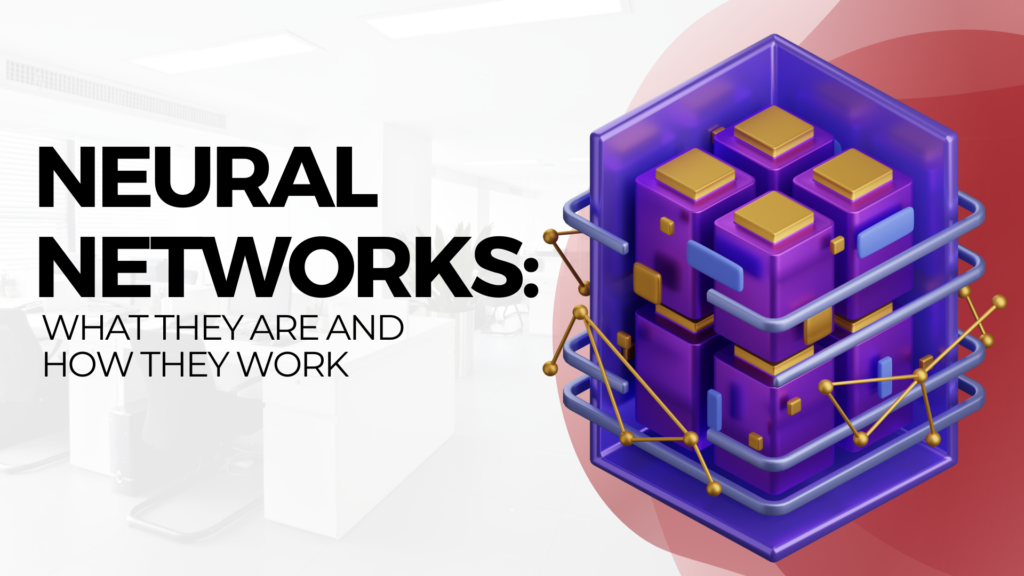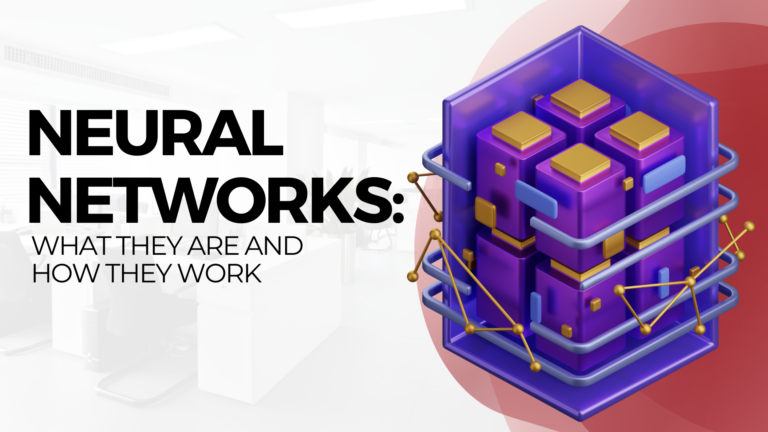Neural Networks: What They Are and How They Work

In recent years, neural networks have become a cornerstone technology in artificial intelligence (AI), driving advancements across various fields, from medicine and finance to user behavior prediction and recommendation systems. Neural networks enable computers to learn, process, and interpret large volumes of data with a level of precision previously thought impossible. According to McKinsey research, AI and neural network implementation in business can drive profit growth of 6-10% annually in the most advanced industries, underscoring the strategic value of this technology.

What Are Neural Networks?
Neural networks are mathematical models designed to mimic the way neurons operate in the human brain. They consist of multiple layers of interconnected nodes (or “neurons”) that process and transmit information. This layered structure allows the network to “learn” from large amounts of data, detecting complex patterns and relationships.
While neural networks are inspired by the biological structure of the brain, their architecture and functioning are far simpler. Today, some of the most successful neural networks have dozens or even hundreds of layers, containing billions of parameters. For example, OpenAI’s GPT-3 model has 175 billion parameters, and training it cost an estimated $4.6 million, highlighting the immense computational resources required to train deep neural networks.
Structure of a Neural Network
A neural network consists of three main components:
- Input Layer
This layer receives data in numerical form (e.g., image pixels or feature values). Each node in this layer represents an individual input value, which will be processed in the subsequent layers. - Hidden Layers
These layers (ranging from one to hundreds) process the data using parameters known as weights. Weights determine the significance of each neuron and its connections for decision-making. Hidden layers are where neural networks can identify intricate dependencies and patterns. - Output Layer
The final layer generates the network’s prediction (e.g., object classification or probabilistic outcome). Output data can be binary, numerical, or categorical, depending on the task.
How Neural Networks Learn
Training a neural network is the process of finding optimal weights for all its neurons. In practice, training involves the following stages:
- Forward Propagation
Input data flows through each layer, is processed, and yields a prediction. At this point, the network is unaware of whether the prediction is correct. - Loss Calculation
After the prediction is made, an error (or “loss” function) is calculated to measure the difference between the actual and predicted values. Common metrics include Mean Squared Error (MSE) and cross-entropy. The lower the loss, the more accurate the network. - Backpropagation of Error
The error is sent back through the network, and neuron weights are adjusted to minimize it. This step involves algorithms like gradient descent and requires considerable computational resources. - Optimization
The optimization process occurs over multiple iterations. The more complex and deeper the network, the more iterations are needed to achieve satisfactory accuracy. For example, training a neural network for image recognition can take hours to weeks, depending on the data volume.
Types of Neural Networks
There are several types of neural networks, each suitable for specific data types and tasks:
- Fully Connected Networks
In fully connected networks, each neuron in one layer is connected to every neuron in the next. This is one of the simplest types, suitable for tasks such as classification and regression. - Convolutional Neural Networks (CNNs)
CNNs are used for image processing, as they can “detect” features in images (such as shapes and edges). In 2012, the CNN model AlexNet achieved 84.6% accuracy in the ImageNet competition, marking a breakthrough in image recognition. - Recurrent Neural Networks (RNNs)
RNNs are designed to handle sequential data, such as text or time series. One of the popular RNN models is Long Short-Term Memory (LSTM), which helps retain longer dependencies in data. - Generative Adversarial Networks (GANs)
GANs are used to generate new data. For example, GANs can create images that are indistinguishable from real photographs. This technology is widely used to generate artificial content, including faces, music, and even videos.
Applications of Neural Networks
Neural networks are applied across a variety of industries, and their usage is growing annually:
- Image Recognition
In medicine, neural networks help diagnose diseases with up to 95% accuracy (e.g., detecting tumors in MRI scans), and in security, they identify suspicious faces or objects in video footage. - Natural Language Processing (NLP)
Neural networks, such as Google’s BERT, have improved text processing accuracy, leading to significant advances in search technologies, recommendation systems, and customer support. - Recommendation Systems
Companies like Amazon and Netflix use neural networks to create personalized recommendations, which boost user engagement and sales by 30-40%. - Autonomous Systems and Robotics
Autonomous vehicles, such as those developed by Waymo and Tesla, rely on neural networks to analyze sensor data and make real-time decisions.
Advantages and Disadvantages of Neural Networks
Advantages:
- Adaptability: Neural networks can adapt to changes in data and perform well in various tasks.
- Complex Pattern Recognition: They are capable of identifying intricate patterns that traditional algorithms cannot.
- Scalability: Given sufficient resources, networks can learn from vast datasets, achieving remarkable accuracy.
Disadvantages:
- Data Requirements: Neural networks need large datasets to provide accurate results. According to an IDC study, 75% of AI projects fail due to insufficient data.
- High Computational Costs: Training complex models requires substantial resources. Companies invest millions of dollars in training deep neural networks, making the technology accessible mainly to large players.
- Interpretability: Neural networks function as a “black box,” making it challenging to understand why the network makes certain decisions.
Conclusion
Neural networks are reshaping the modern technology landscape, creating new opportunities for data analysis and automation of complex tasks. Despite high training costs and data requirements, neural networks remain a leading technology, continuously evolving and pushing boundaries.
The potential of neural networks is immense, making them essential for those seeking innovative solutions and competitive advantages in business.
Contact Us
Please contact us for any further information









































































